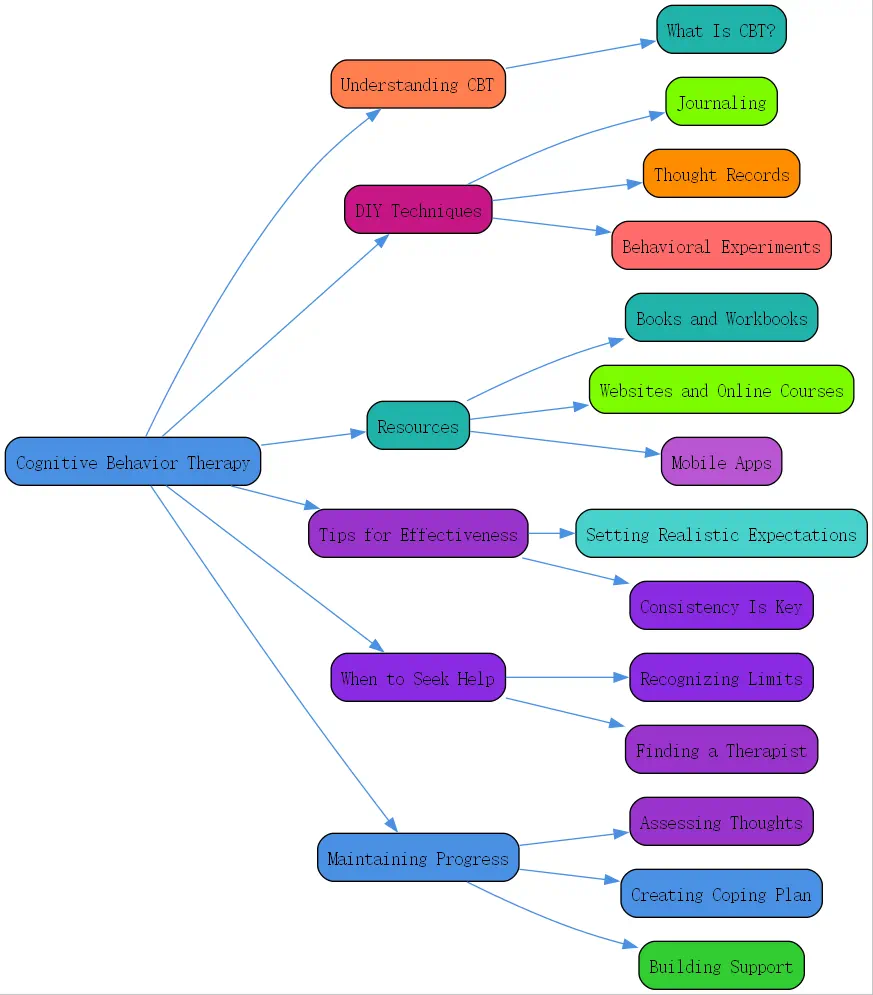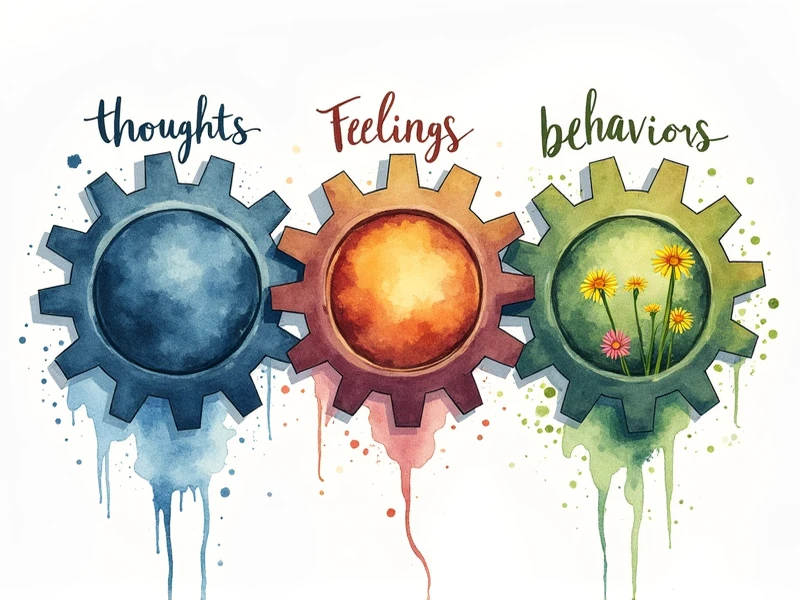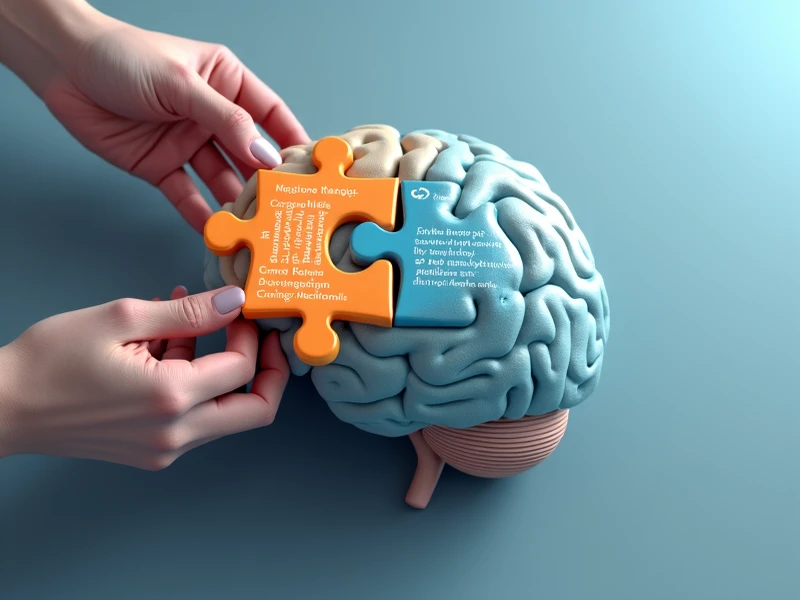Mental health is a crucial aspect of well-being, and one of the most effective methods for improving it is cognitive behavior therapy (CBT). Whether through professional guidance or self-help strategies, CBT offers powerful tools to identify and transform harmful thought and behavior patterns into healthier perspectives and habits. In this article, we’ll take a deep dive into CBT, explore how it works, and provide practical techniques and resources to help you apply it in everyday life.
Understanding Cognitive Behavior Therapy (CBT)

Cognitive behavior therapy has become a cornerstone of modern psychology, with extensive research proving its effectiveness in treating a variety of mental health concerns. From anxiety and depression to stress management and relationship challenges, CBT empowers individuals to reclaim control over their thoughts, emotions, and behaviors.
What Is Cognitive Behavior Therapy?
At its core, cognitive behavior therapy psychology focuses on the interplay between thoughts, feelings, and behaviors. Developed on two primary theoretical foundations—the cognitive and behavioral models—CBT encourages individuals to alter negative thought patterns and, as a result, change how they feel and act.
- The Cognitive Model highlights the power of thought patterns and how they influence perceptions of reality. For example, if someone consistently thinks, “I’ll fail no matter what I do,” they may avoid trying altogether because of this distorted belief.
- The Behavioral Model examines how actions and habits affect emotions and thoughts. Engaging in positive behaviors, for instance, can naturally uplift mood and improve outlook.
The connection between thoughts, feelings, and behaviors is key to CBT. Shifting one element—such as reframing a negative thought—can lead to transformative changes that enhance overall mental health.

DIY Cognitive Behavior Therapy Techniques You Can Practice at Home
Although working with a therapist is ideal for deep-rooted challenges, there are many behavior cognitive therapy techniques you can apply independently to improve your well-being. Self-directed CBT can help you recognize and address harmful thought patterns, develop healthier habits, and build emotional resilience over time.
Journaling: Tracking Thoughts, Feelings, and Behaviors
Journaling is a simple yet incredibly powerful CBT technique. By documenting daily experiences, emotions, and reactions, you can identify recurring themes and triggers tied to negative thoughts or behaviors.
- Write down specific situations that caused stress or anxiety.
- Note the emotions you experienced and any automatic negative thoughts (e.g., “I’m not good enough”).
- Reflect on how those thoughts influenced your actions during the situation.
Over time, journaling will help you detect patterns and provide a foundation for making meaningful changes. Here’s an example: If your anxiety spikes before social events, journaling can help you understand what thoughts fuel that anxiety and explore ways to challenge them.
Thought Records: Identifying and Challenging Negative Thought Patterns
A thought record goes hand-in-hand with journaling and takes things a step further. In this exercise, you systematically challenge negative thoughts by weighing the evidence for or against them.
Steps to Create a Thought Record: 1. Write down the situation that triggered a negative emotion. 2. Identify your automatic negative thoughts and the associated emotions (e.g., anger or sadness). 3. Spot cognitive distortions like all-or-nothing thinking or catastrophizing. 4. Challenge these harmful thoughts with logic and alternative perspectives. For instance, if you think, “I’ll never succeed,” counter it with, “I’ve succeeded before, and I can do it again.” 5. Reflect on how challenging the thought impacts your emotional state.
By consistently practicing thought records, you’ll develop greater confidence in your ability to handle challenging situations and emotions.
Behavioral Experiments: Testing Thoughts and Beliefs in Real Life
Behavioral experiments allow you to test negative assumptions or beliefs in practice, proving them wrong through direct experience.
Example of a Behavioral Experiment: If you believe people will judge you for making mistakes, intentionally try to do something minor, like dropping a pen in public. Observe how others react—or don’t react—which can help dismantle the belief that everyone is scrutinizing your actions.
This hands-on approach bridges the gap between understanding thoughts and behaviors and implementing lasting change.
Mindfulness and Relaxation Techniques: Enhancing CBT Benefits
Pairing cognitive behavior therapy in psychology with mindfulness practices can help you stay in the present moment, reduce stress, and improve self-awareness. Mindfulness techniques—like deep breathing, progressive muscle relaxation, or guided meditations—complement CBT by calming the mind and enhancing focus.
Resources for Cognitive Behavior Therapy (Behavior Cognitive Therapy)
To deepen your understanding of CBT and reinforce your self-directed therapy journey, there are several valuable resources at your disposal. These include books, online tools, and community groups that align with CBT principles.
Books and Workbooks for Cognitive Behavior Therapy
For those who prefer self-guided learning, the following books are excellent options:
- Feeling Good by David D. Burns
- The Anxiety and Worry Workbook by David A. Clark and Aaron T. Beck
These titles provide practical exercises, insights, and strategies grounded in CBT methodology.
Websites and Online Courses for Cognitive Behavior
Websites and courses such as MoodGym or CBT Nuggets offer accessible, interactive materials that help you learn and practice CBT skills.
Mobile Apps for Cognitive Behavior Therapy (CBT)
In today’s digital world, mobile apps like MoodNotes and Pacifica serve as excellent tools for journaling, managing emotional triggers, and practicing CBT techniques on the go.
Online Support Groups and Forums
Connecting with others who are also practicing DIY CBT can be highly motivating. Explore online communities where you can share insights, challenges, and victories with like-minded individuals.
Tips for Effective Cognitive Behavior Therapy
Succeeding with CBT requires patience, persistence, and realistic expectations. Keeping the following pointers in mind will boost your chances of success:
Setting Realistic Expectations
Positive change takes time and consistent effort—don’t expect immediate results. Understand that gradual progress is still progress, and setbacks are a natural part of any self-improvement journey.
Consistency Is Key for Cognitive Behavior
Commit to incorporating CBT exercises into your daily routine. For example, spend 10–15 minutes journaling or practicing mindfulness each day to establish a strong foundation.
Celebrate Small Victories in Cognitive Behavior Therapy

Every step you take toward breaking negative cycles is an achievement worth celebrating. Whether it’s countering a single harmful thought or successfully completing a behavioral experiment, acknowledge your progress.
When to Seek Professional Help for Cognitive Behavior Therapy Psychology

While DIY approaches are effective for milder challenges, there are times when professional support is essential.
Recognizing When DIY CBT Isn’t Enough
If you’re struggling to make progress with self-directed efforts, or if you’re facing severe mental health challenges (e.g., clinical depression, significant anxiety disorders), consulting a licensed therapist is crucial. Check out BrainTalking’s depression therapy resources to explore professional solutions.
Finding a Qualified Therapist
Look for therapists who specialize in cognitive behavior therapy and have relevant licenses or credentials. Referrals, online platforms, and mental health directories can streamline your search.
Maintaining Progress and Preventing Relapse in Cognitive Behavior
Self-improvement doesn’t end once you achieve your goals—it requires ongoing effort to sustain progress and avoid setbacks.
Regularly Assessing Thoughts, Feelings, and Behaviors
Periodically reflect on your cognitive and emotional states to ensure you’re staying on track. Use tools like thought records and journaling to create a consistent feedback loop.
Creating a Personalized Coping Plan
Develop strategies to handle stressful situations when they arise. For instance, if social anxiety is a concern, plan to use mindfulness exercises beforehand to reduce unease.
Building a Strong Support System
Surround yourself with friends, family, or peers who encourage your personal growth journey. A solid support system can make challenges feel less overwhelming.
Takeaways
- Cognitive behavior therapy bridges thoughts, feelings, and actions to create lasting positive change.
- Techniques like journaling, thought records, and mindfulness practices can help you apply CBT at home.
- Utilize resources such as books, apps, and support groups for added support.
- Set realistic expectations, stay consistent, and celebrate small victories as you progress.
- Seek professional therapy when necessary to address severe or persistent challenges.




